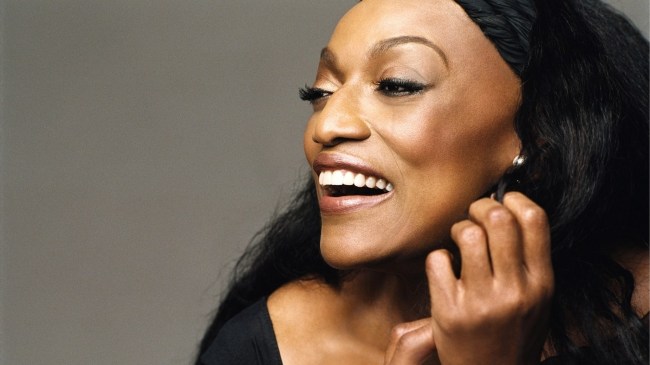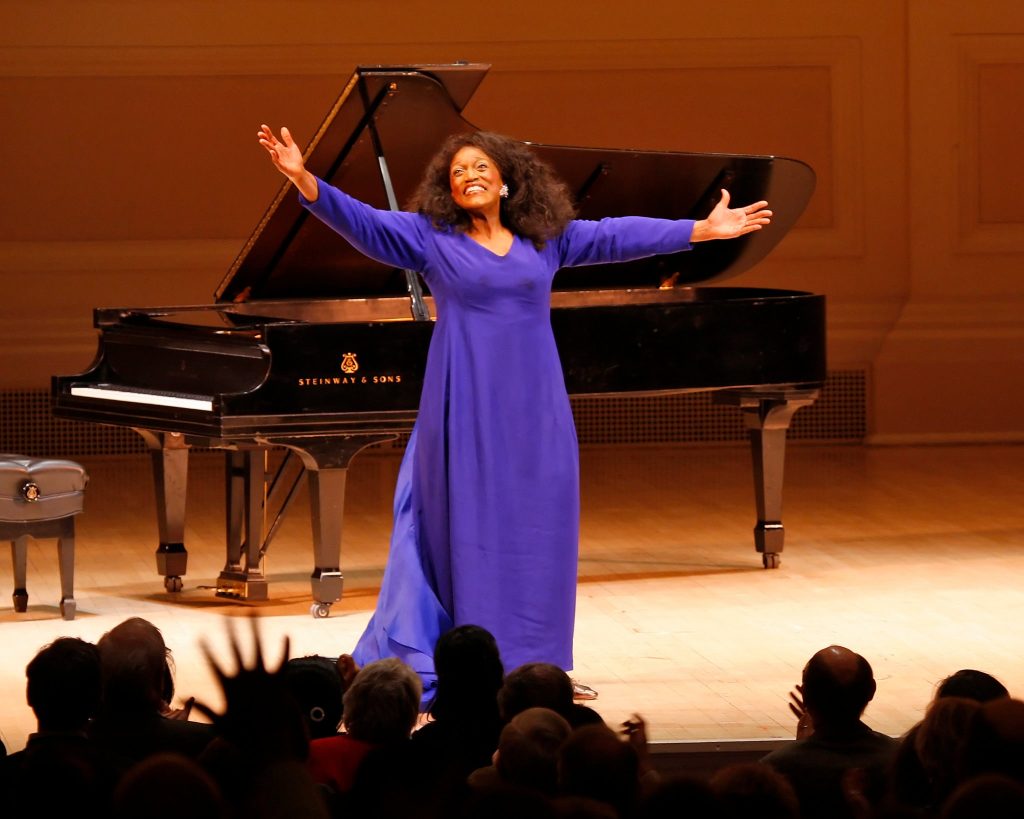Podcast: Play in new window | Download | Embed
The woman who once told a reporter that “pigeonholes were for pigeons” chose her own destiny in a world where Black women have often been dismissed and ignored. She left this mortal coil recently, and this program is in tribute to her gifts.
Born roughly a month after the end of the Second World War, Jessye Norman, originally from Augusta, GA, was the daughter of an insurance salesman and a schoolteacher. Her parents recognized her gift for singing at an early age. Norman, as legend has it, was introduced to Classical and Opera music forms while listening to radio programs from the Metropolitan Opera in New York on Saturday mornings. The radio she heard them on was a gift on her ninth birthday, and she would listen to the broadcasts while cleaning her room, naming Leontyne Price and Marian Anderson as her major influences.

At age 16, she entered a national signing contest. Although she did not win, she was offered a scholarship to Howard University. By 1968, after attending several colleges, she had completed her studies, majoring in music, with a Master’s Degree and set out for Europe to start her career. Although she did perform in some standard operas, she preferred to be a soloist and perform live concert recitals, choosing her own repertoire, almost unheard of for a world class singer of music in her field.
Her live performances as Cassandra from Berlioz’s Les Troyens at the Metropolitan Operas House in New York and in Philadelphia in the early 1980’s, after about a decade of performances in Europe, catapulted Norman into the upper echelons of the Opera world. Her 1988 recording of Ariadne auf Naxos by Strauss is considered by critics to be without peer.

She continued to perform and record sporadically, releasing her last LP of material in 2010. She spent much of her time in later life on a number of charities, including a free music education program in her hometown. Much like her major influences, she split her selections between Negro Spirituals and Classical music, with a heavy emphasis on German composers, particularly Wagner.
“I do not consider my blackness a problem. I think it looks rather nice.”
Jessye Norman
Andre Heller did produce a documentary film about her in 1994, Jessye Norman, A Portrait, where she detailed not just her work as an artist, but as a civil rights activist. In addition to music education, she was an ardent supporter of the Girl Scouts and AIDS research.
She published a memoir in 2014, Stand Up and Sing!, where she details what life was like in the South during the segregationist Jim Crow era, where, in her own words, people just wanted to “have their own worth in the world.” A year later, she suffered a spinal cord injury, effectively ending any last hopes that she might have in performing live again.

Norman died on September 30, 2019 at the age of 74 in New York City at St. Luke’s Hospital due to complications from the injury that led to septic shock and multiple organ failure, leaving behind a legacy for Black women in the fine arts field that can’t be understated.
First Part
- Strauss, Ariadne Auf Naxos, Grossmächtige Prinzessin
- Berg, Leider, 7 Early Songs: Nacht
- Schoenberg, Gürrelieder, Du Sendest Mir Einen
- Strauss, Allegretto In E For Violin & Piano, AV 149, Beim Schlafengehen
Second Part
- Bizet, Carmen, L’amour est un oiseau rebelle (aka Habanera)
- Wagner, Tristan und Isolde, Liebestod
- Schubert, Ellens Dritter Gesang, D 389, Op 52, Ave Maria (based upon Sir Walter Scott’s “Lady of the Lake” poem)
- Traditional, Roots: My Life, My Song, God’s Gonna Cut You Down
Finale
- Gounod, Faust, O Divine Redeemer
Love to you all.
Ben “Daddy Ben Bear” Brown Jr.
Host, Producer, Audio Engineer and Writer
#opera #jessyenorman #blackhistory
“Copyright Disclaimer Under Section 107 of the Copyright Act 1976, allowance is made for ‘fair use’ for purposes such as criticism, comment, news reporting, teaching, scholarship, and research. Fair use is a use permitted by copyright statute that might otherwise be infringing. Non-profit, educational or personal use tips the balance in favor of fair use.”
